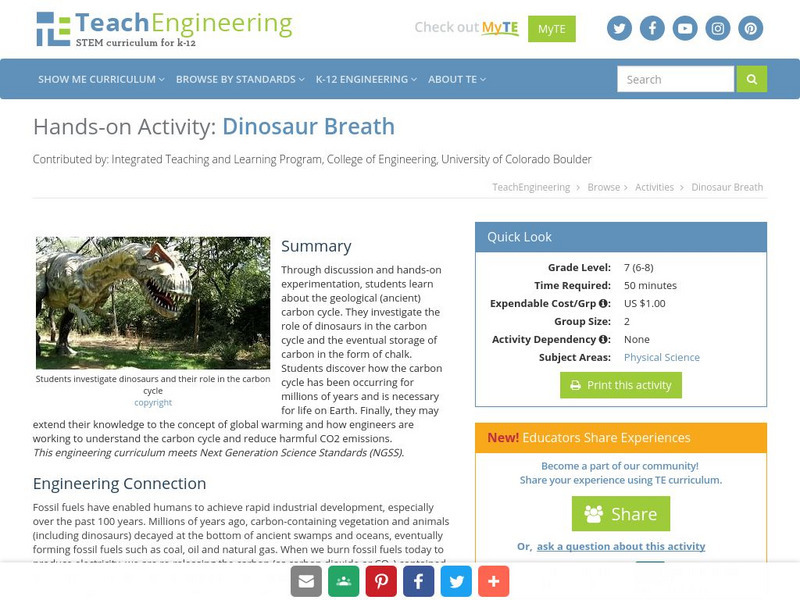National Geographic
National Geographic: Natural Gas: A Cleaner Energy Solution?
For this activity, students read informational text on natural gas and compare it to other fossil fuels for its greenhouse gas emissions and environmental impact. They then prepare a pro or con position on whether natural gas is good...
TeachEngineering
Teach Engineering: Dinosaur Breath
Through discussion and hands-on experimentation, students learn about the geological (ancient) carbon cycle. They investigate the role of dinosaurs in the carbon cycle and the eventual storage of carbon in the form of chalk. Students...
PBS
Pbs Learning Media: Global Warming: Graphs Tell the Story
Examine these graphs from the NOVA/ FRONTLINE Web site to see dramatic increases in the temperature of Earth's surface and greenhouse gases in the atmosphere.
University of Illinois
University of Illinois: Illinois State Water Survey: Nitrogen Cycle: Human Impact on the Nitrogen Cycle
An overview of the impact of human activities on the environment and how those actions effect the nitrogen cycle.
TeachEngineering
Teach Engineering: The Great Divide
In this activity, students will use cookies to simulate the distribution of our nonrenewable resources (energy). Then, they will discuss how the world's growing population affects the fairness and effectiveness of this distribution of...
TeachEngineering
Teach Engineering: Carbon Cycles
Students are introduced to the concept of energy cycles by learning about the carbon cycle. They will learn how carbon atoms travel through the geological (ancient) carbon cycle and the biological/physical carbon cycle. Students will...
Woods Hole Oceanographic Institution
Woods Hole Oceanographic Institution: Global Carbon Cycle
Interactive learning activity examines the global carbon cycle and describes the exchanges of carbon between the Earth's atmosphere, oceans, land and fossil fuels.
US Environmental Protection Agency
Epa: Land, Waste, and Cleanup Topics
This site is loaded with information on solid waste and hazardous waste. It includes industries' effects on the environment, waste programs, treatment, control, pollution prevention, recycling, and cleanup programs.





